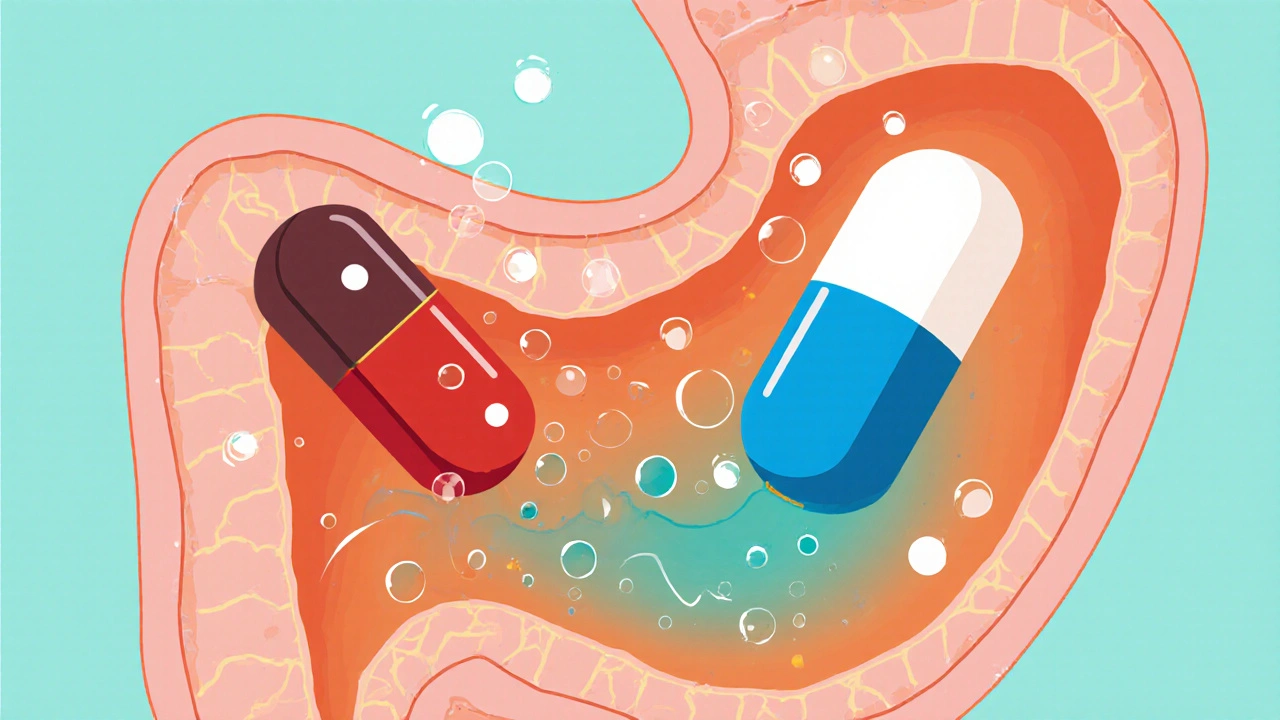When dealing with H2RAs, histamine H2‑receptor antagonists that block stomach acid production. Also called H2 blockers, they are used for GERD, gastro‑esophageal reflux disease, a condition where acid irritates the esophagus and peptic ulcers. Compared with proton pump inhibitors, stronger acid‑suppressing drugs that inhibit the H⁺‑K⁺‑ATPase pump, H2RAs offer a milder, reversible effect. A common example is famotidine, an over‑the‑counter H2RA with a good safety profile, while older agents like cimetidine, the first marketed H2RA, are less favored due to drug interactions. In short, H2RAs sit between antacids and PPIs, offering a balance of speed and potency.
H2RAs reduce stomach acid by blocking histamine receptors on parietal cells. This reduction helps heal ulcers and relieves heartburn without completely shutting down acid production. Because the effect is reversible, doctors often start patients on an H2RA before moving to a stronger therapy if symptoms persist. Typical dosing ranges from 20 mg to 40 mg once or twice daily, and most people notice relief within an hour. Side effects are usually mild – headache, dizziness, or a rare taste disturbance – and serious problems are uncommon. If you need to stop an H2RA after long‑term use, a gradual taper helps avoid rebound acid hypersecretion, a pattern similar to what’s seen with antidepressant withdrawal discussed in some of our other guides.
When comparing options, consider four key attributes: potency, onset speed, interaction risk, and cost. PPIs provide stronger, longer‑lasting suppression but can increase infection risk and may cost more. Antacids act instantly but only provide brief relief. H2RAs sit in the middle, offering decent potency with fewer drug‑interaction concerns than cimetidine and at a lower price point than many brand‑name PPIs. For patients on multiple medications, choosing famotidine over cimetidine often reduces the chance of cytochrome P450 interactions, a point highlighted in our drug‑interaction articles.
Below you’ll find a curated collection of articles that dive deeper into specific H2RA topics – from dosing tips and side‑effect management to direct comparisons with PPIs and real‑world patient experiences. Whether you’re a newcomer looking for a quick start guide or a seasoned patient seeking detailed comparison data, the posts ahead cover the full spectrum of information you’ll need to make an informed decision about acid‑reducing therapy.

Learn how acid‑reducing meds like PPIs and H2 blockers change stomach pH, affect drug absorption, and what clinicians can do to avoid therapeutic failures.
read more